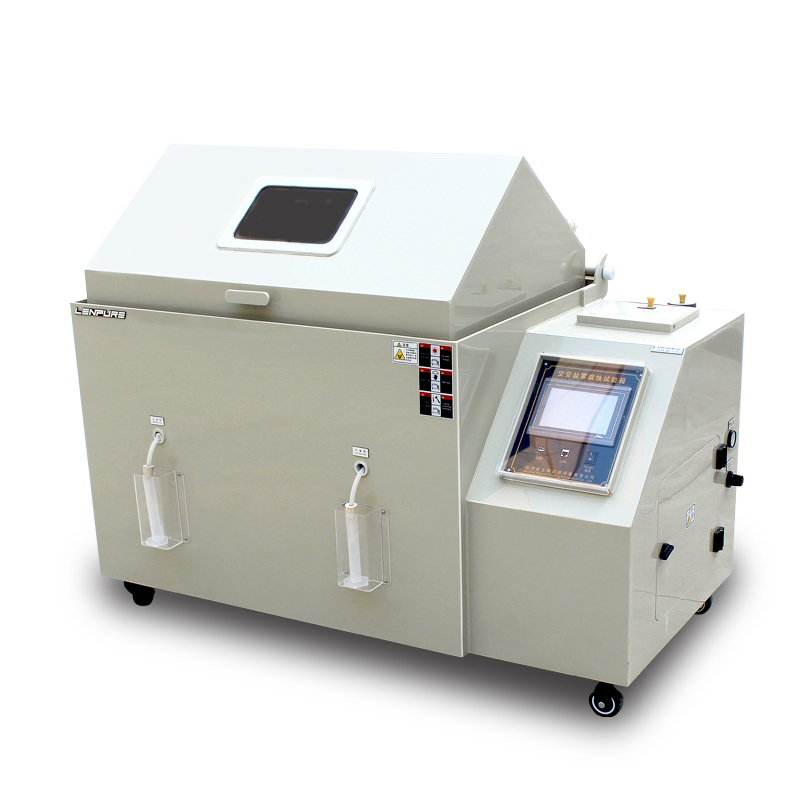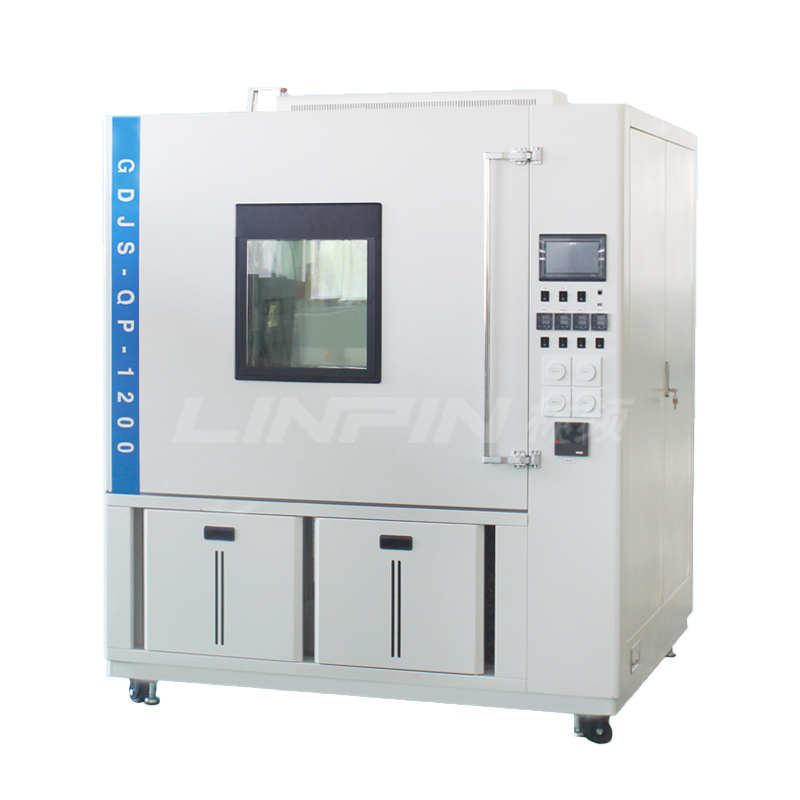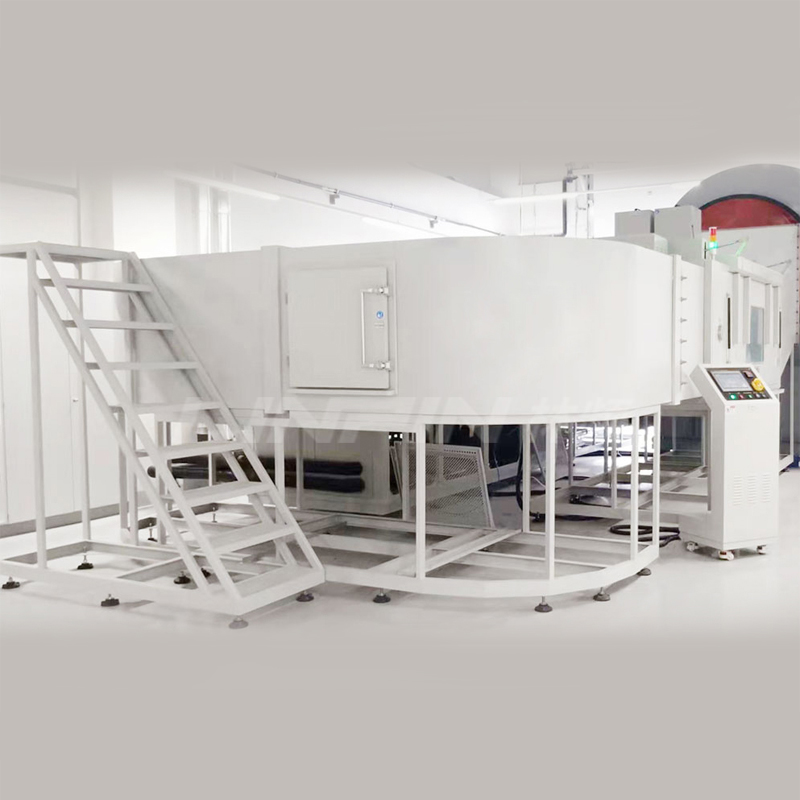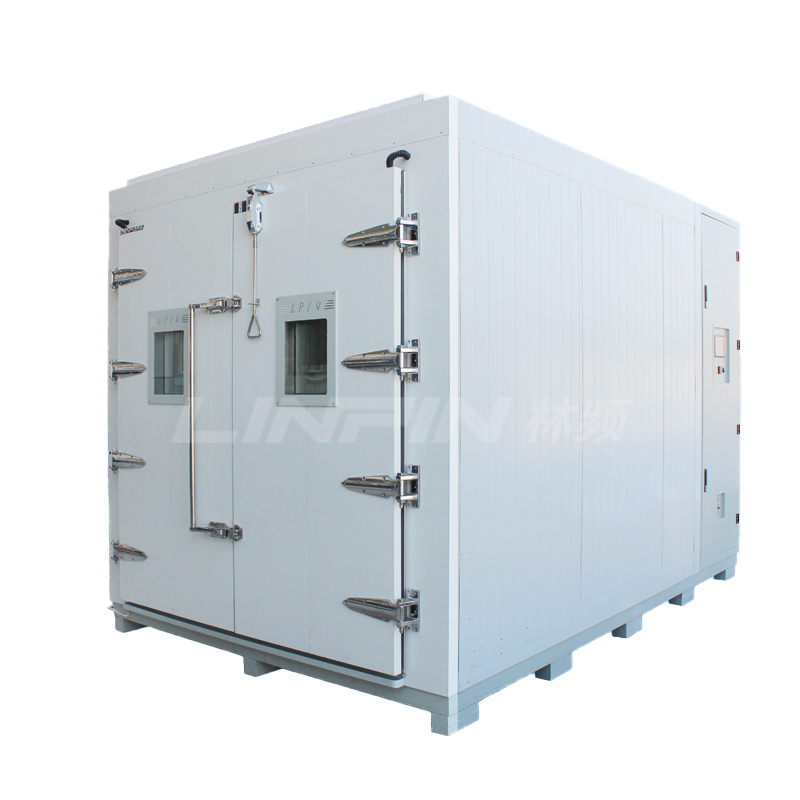Standard Components of a Salt Spray Chamber
Author:LINPIN Update Time:2025-04-19 Source:LINPINAll components in contact with the salt spray or test solution must be corrosion-resistant and must not affect the corrosion rate of the solution. The test components of a salt spray chamber include the following:
-
Exposure Chamber (Test Space):
- The chamber must have a volume of at least 0.4 m³.
- For larger chambers, uniform distribution of the salt spray (especially in acidic salt spray tests) must be ensured.
- The chamber's design should prevent condensation droplets from the top surface from falling onto test specimens.
- The size and shape must maintain stable conditions during testing.
-
Humidity and Temperature Control:
- This system ensures that temperature and humidity remain within specified limits.
- Temperature measurement should be taken at least 100 mm from the chamber's inner walls.

-
Spraying System:
- Consists of a clean air supply unit (with controlled pressure and humidity), a salt solution tank, and one or more spray nozzles.
- Compressed air supplied to the nozzles must be filtered to remove oil and solid particles.
- Atomization pressure should be maintained between 70–170 kPa, ideally at a constant 98 kPa.
-
Air Saturator:
- To prevent water evaporation from spray droplets, air must pass through a saturation tower (heated to a temperature slightly higher than the chamber) before entering the nozzle.
- During acidic salt spray tests, the temperature should be adjusted based on pressure and nozzle type to ensure proper salt spray deposition rate and solution concentration.
- The water level should be automatically regulated to maintain sufficient humidity.
-
Salt Spray Collection Device:
- At least two collectors (made of glass or chemically inert material) should be placed inside the chamber.
- Each collector should have a funnel shape with a collection area of 80 cm², connected to a measuring cylinder or similar container.
- One collector should be placed near the nozzle, and the other far from the nozzle, to ensure that only salt spray (not dripping liquid from specimens) is collected.
-
Air Dryer:
- Composed of a heating device and fan, supplying dry air with controlled humidity for the "dry" phase of testing.
-
Exhaust System:
- Removes gases from the chamber, ensuring that outdoor exhaust is not affected by atmospheric backpressure.
- Proper waste gas treatment should be applied before emission.
-
Drainage System:
- The chamber must have a drainage mechanism to prevent direct discharge of test solutions into civil sewage systems.
This translation maintains technical accuracy while ensuring clarity and readability in English. Let me know if you need any refinements!





